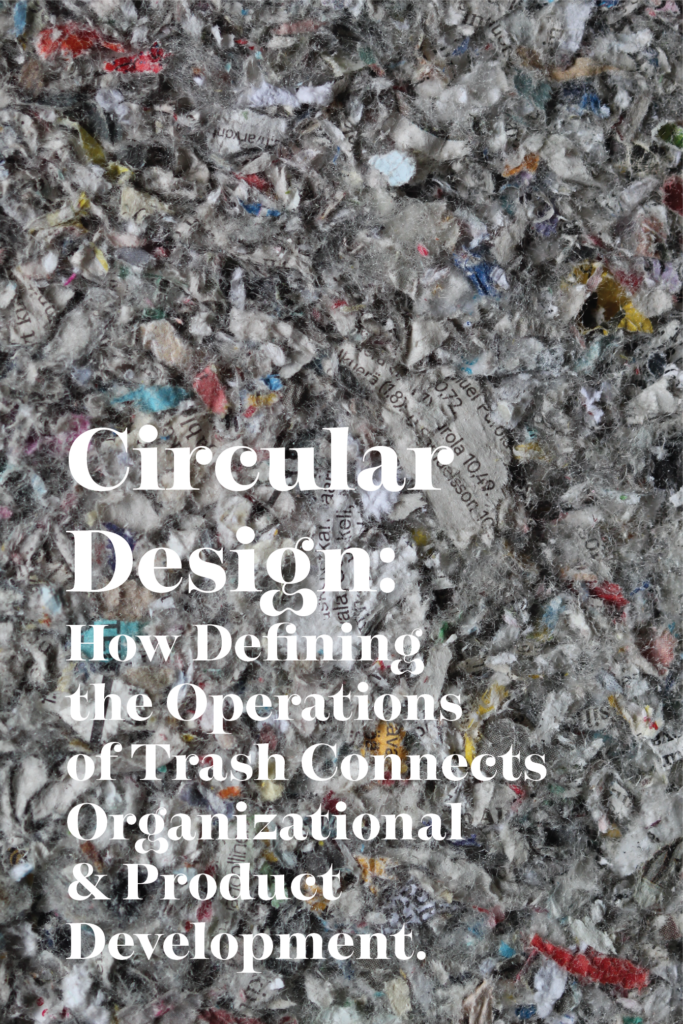Circular Design: How Organizational Development and Product Lifecycles Collide in Closed Loop Systems
Date:
September 6, 2022
Category:

The lifecycle of a product is acutely parallel to the lifecycle of a company. Like all products, organizations begin with an idea, focus on the initial functionality for the consumer, and usually ignore the far more common reality of the “ending” or “recycling” phase. Our culture has come to believe the end of a product or organization shouldn’t be considered — like our relationship with trash, we push this part of ideation to the wayside, usually through fear that the end of an idea is aligned with failure, or leaning into the cultural norm of ignoring this phase to excuse our current infrastructure’s and normative (colonized) culture’s incapacity to manage this “final” stage of development.
But if we look at circular design thinking, what most people avoid for fear of letting go of an idea shifts to us seeing the opportunities to deconstruct what exists to feed what we’re creating. A well-defined path of utilizing what we’ve designed to discover how we can do better and redistribute our resources for sustainable continuation is essential for product producers to imagine their ideas thriving for generations to come, while community or impact driven organizations are able to utilize this thought process to create clarity around growth models that allow team members to be seen as people not just positions designed to accomplish.
So let’s talk about creating a narrative for the breakdown. It starts by looking at the process to define and design, and holding ourselves accountable as we ensure there is a way for us to take apart as much as there is a way for us to reconstruct into something new. This is where a lot of people tend to get stuck, but a place we see as an opportunity to write a pivot plan and collaborate with creative partners.
For those looking to dive deep into circular design thinking for either their products or organizations, we’ve got a few books and brilliant minds for you to follow as you redefine the cultural norm of putting your trash, or take apart a plan, first.
September 6, 2022